For years, the only flamingos in Florida were at zoos, Hialeah Race Track or decorating people’s lawns.
Now, however, flamingos have popped up all over after Hurricane Idalia in late September 2023. Scientists estimate there were about 75 in Florida after the storm, presumable swept here from the Yucatan by the weather system.

Even before this windfall, a group of scientists in 2018 published a paper that contended that the occasional flamingo in Florida is evidence of a recovering species that disappeared from Florida in the early 1900s. They argue flamingos are native to Florida and disappeared because of “plume hunters.”
How to see flamingos in Florida now — if you’re lucky
Recently, several dozen flamingos have been seen around Florida and so the question is: Will any stay or return? And can you see them?
You will be very lucky to spot these elusive birds, but they have been sighted regularly in several locations into 2024.
I’ll start for obvious reasons in Flamingo, that end-of-the-road spot in Everglades National Park where, despite the name, few visitors have seen a flamingo in a hundred years.
And I saw one there!
I went to Flamingo with my husband and our kayak with a plan to paddle into Snake Bight a shallow wilderness cove east of Flamingo, on Dec. 12, 2023. I confirmed via phone with a ranger in Flamingo that, indeed, as many as 30 flamingos had been hanging out there since Hurricane Idalia.
Snake Bight attracts thousands of wading birds and we’ve paddled there twice in recent years to admire the roseate spoonbills and white pelicans massed there. (A bight is an indentation in the coast, so somebody got a good chuckle, I bet, naming it Snake Bight.)
On arrival at the national park, however, we learned that a strong north wind was coming the next day and it would be a difficult and maybe even dangerous paddle trip. We scrapped the Snake Bight plan and instead kayaked the protected waters of Buttonwood Canal.
But I am a very lucky person. After our paddle, we returned to the Flamingo Visitor Center, where there are big second-story picture windows overlooking Florida Bay.
At the center of those windows was a scope focused on — a flamingo!
A single flamingo had been spotted about a quarter mile out into the bay, just hanging out for several hours. Photographers with strong telephoto lenses managed to capture photos. A ranger was taking a photo with his Iphone through a set of binoculars.
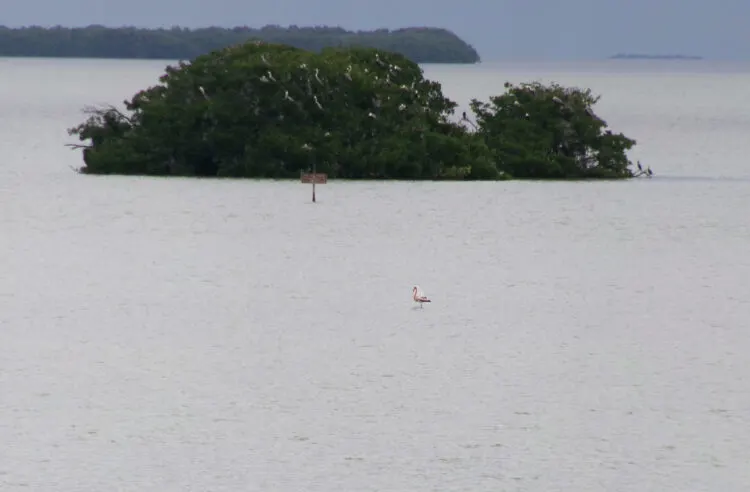
The rangers, volunteers and visitors were giddy with excitement. A ranger explained that flamingos are born white and only turn pink from eating shrimp, so this not-so-pink bird was probably a juvenile. Through the scope, though, the curve of the beak and neck and long legs were an unmistakable profile.
If flamingos become regulars in Florida again, there’s a good chance it will be in Flamingo, where flamingo sightings have occurred in winter and spring regularly over the years.
Since Hurrciane Idalia, the most content reports and photos I’m seeing online are in the Haulover Canal area in Merritt Island National Wildlife Refuge. (See the photo at the top of this story.)
For months, birders have been reporting on the e-bird.org rare-bird reporting web pages of seeing flamingos from the Haulover Canal kayak launch at Merritt Island NWR. (These sightings occurred throughout December and as recently as late March.)
Photographer TJ Waller was nice enough to post this information, which includes a map: “Currently they are located near the small island at the end of the Haulover Canal Kayak launch. If you row out there, be responsible and don’t get too close.”
(Audubon Florida’s Director of Research Jerry Lorenz says if the flamingo is aware of you — moving or shuffling its feet — then you’re too close. He suggests you give them at least 200 feet of space.)
Flamingos have also been seen regularly around the Tampa Bay area, specifically Terra Ceia Preserve State Park on the Hightower Trail in Manatee. On Dec. 23, a flamingo was reported along the Sunshine Skyway Bridge in the South Rest Area.
Flamingos were photographed in several other areas of Tampa Bay, including Fort De Soto beach in St. Petersburg and along the Sanibel Causeway, Clearwater Beach, Fred Howard Park in Tarpon Springs and Treasure Island Beach.
In early February, four flamingos were photographed on Pine Island. On March 20, there were reports of flamingos on an island off Pine Island.
You can’t count on flamingos staying in any of these locations, however.
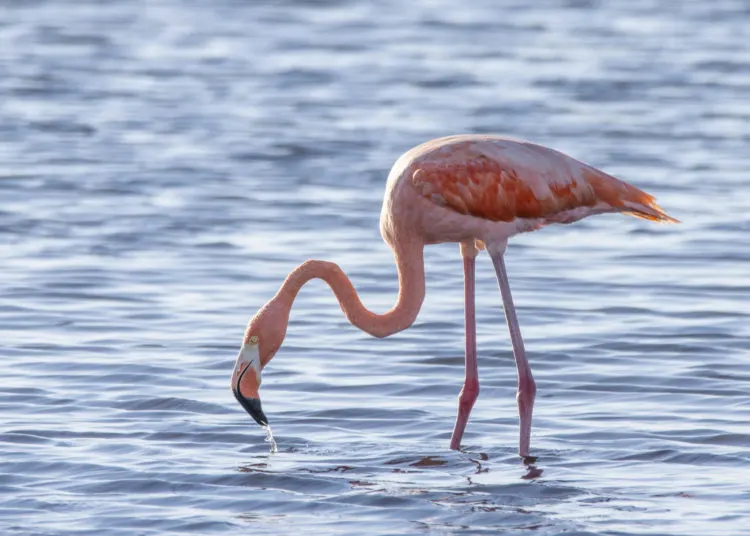
Wild flamingos in Florida that have stuck around
One place where a flamingo has been seen over several years is St. Marks Wildlife Refuge in the Big Bend/Panhandle.
Pinky the flamingo has been spotted regularly since Hurricane Michael in 2018. The bird was joined by six more flamingos after Hurricane Idalia, though there’s no guarantee they’ll remain here.
In Palm Beach County, a flock of flamingos often comes in spring
Over several years, flamingos have returned to a remote wetland in Palm Beach County.
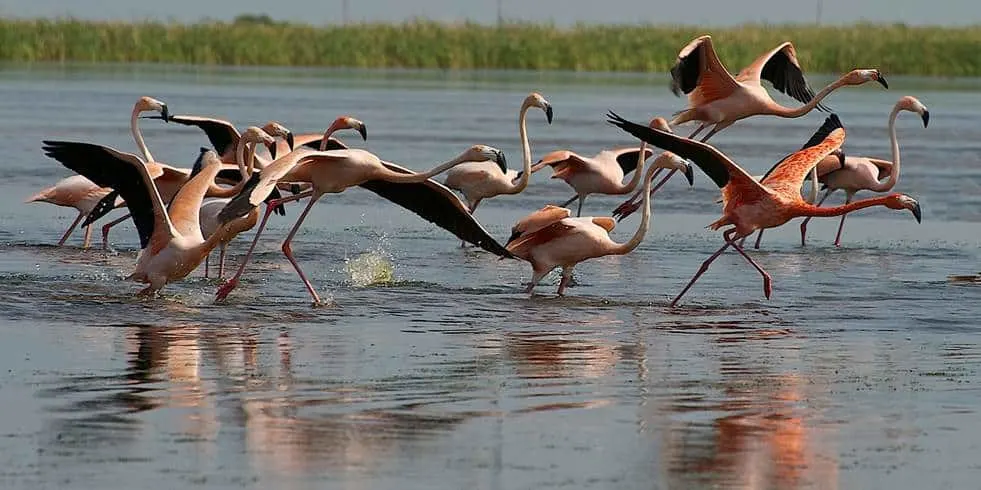
Mark Cook, lead scientist of Everglades Systems Assessment at South Florida Water Management District, said: “They keep coming back every year.”
The number varies: In 2014, 147 were counted. In 2015, there were eight. But then, for several years, the flamingos didn’t return.
In 2022, a few flamingos appeared in their chosen spot and the Audubon chapter in Palm Beach County organized field trips to see them. (On one trip, four flamingos were seen and on a second, two.)
The flamingos have picked a remote location, a water treatment facility in western Palm Beach County, Stormwater Treatment Area 2 (STA2). It’s a 9,000-acre man-made wetland designed to remove excess nutrients from the water supply.
The flamingos only visit the Palm Beach County site in spring, and scientists don’t know where they come from or where they go.
Will flamingos stay and thrive in Florida?
The research group analyzed historical evidence of American Flamingos in Florida from narrative accounts and museum records and contrasted that information to sightings of the pink bird. They concluded that American Flamingos once occurred naturally in large flocks in Florida before disappearing by about 1905. Collected data since 1950 add up to 500 observations of American Flamingos in Florida with an increase in frequency and flock size over time.
Audubon Florida’s Director of Research Jerry Lorenz, PhD, in a talk to the Audubon Society, said he believes that flamingos can stay and thrive in Florida. He says perhaps the efforts to restore water flow in the Everglades and into Florida Bay has created an environment where flamingos may nest and maintain a population.
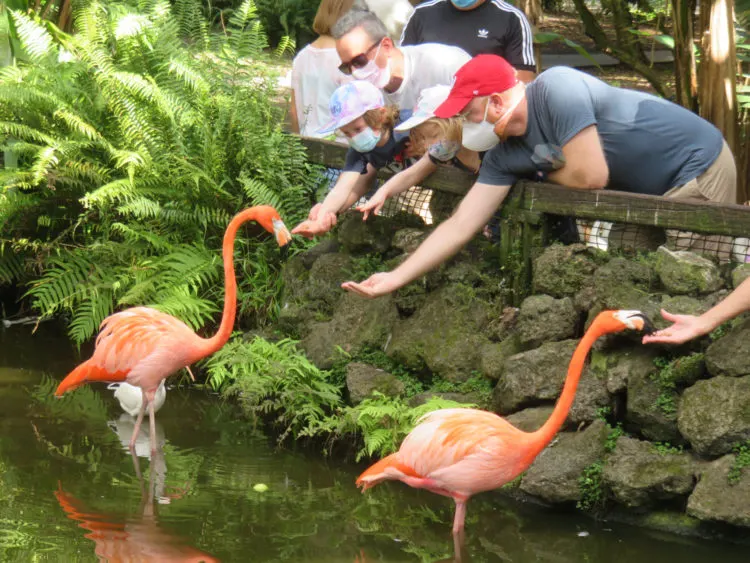
The flamingo as the Florida State Bird?
In 2024 when the Florida Legislature met, a bill was introduced to make the scrub jay the Florida State Park instead of the mockingbird, which is the state bird of four other states.
Democratic State Senator Tina Polsky entered the scrub jay bill, as she has done in previous sessions. The scrub jay is a pretty blue bird endemic to Florida (that is, found only in Florida.) They are surprisingly friendly birds, often hanging around even when approached. Their scrub habitat in Central Florida is disappearing and under stress from development.
In 2024, however, thanks to the influx of post-hurricane flamingos, bills were introduced to instead make the state bird the flamingo.
Neither of the bird bills advanced and the 2024 session ended. But it’s not over.
Dr. Steven Whitfield, conservation biologist and director of terrestrial and wetlands conservation for the Audubon Society, spoke to the Audubon Everglades in March 2024 and urged members to support the flamingo as the state bird.
“Call your legislators,” he said. “We will try again next year.”
Making flamingos the state bird will bring the bird public attention and raise awarness that flamingos are native to Florida and once breeded here. With conservation efforts, Whitfield says, they might do so again.
And the scrub jay? Whitfied demurred: “I’d love to see the legislature discuss birds more!”
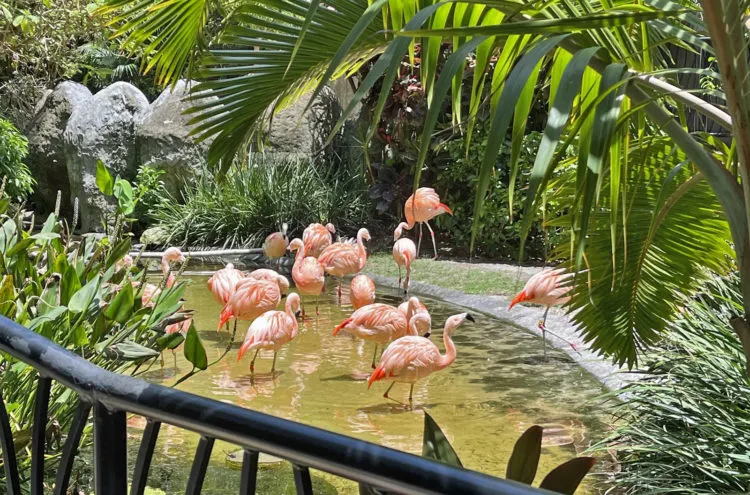
Want to see flamingos up close and easy?
The easy way to see flamingos is at several beautiful and historic Florida gardens.
Flamingo Gardens: Has the biggest tree and the largest collection of native wildlife in Florida. It combines history, beauty, flora and fauna for a fun outing. You can hand-feed the flamingos, located in a beautiful lagoon here.
St. Petersburg Sunken Gardens, St. Petersburg: Starting in 1911, George Turner Sr., an avid gardener, drained a lake in a sinkhole and used the rich soil to plant fruit trees, flowering bushes and Royal Palm trees. This historic garden in downtown St. Petersburg has a flock of flamingos in a lovely setting.
Everglades Wonder Gardens in Bonita Springs: Everglades Wonder Gardens in Bonita Springs has survived since 1936. Now it’s a small but serene spot to enjoy glorious flora, colorful birds, gators and more. It’s located on Old 41 Road, a pocket of Old Florida that is having a renaissance. It is home to two flamingos from an original flock from the 1960s.
Birding resources:
- Florida Great Birding and Wildlife Trail: How to use this excellent website.
- Flamingos in Florida: Back for good?
- Birds hold court at Wakodahatchee Wetlands & Green Cay in suburban Palm Beach County
- Wakodahatchee Wetlands in Delray: Wood storks nesting in spring
- Peaceful Waters Sanctuary, Wellington: Top birding spot in sububan Palm Beach County
- Merritt Island National Wildlife Refuge: Birds, beauty galore
- White pelicans: How to see spectacular birds wintering in Florida
- Circle B Bar Reserve: Lakeland park is terrific for wildlife
- Thousands of birds migrate over Keys in fall
- St. Augustine Alligator Farm bird rookery is thrilling for birders
- Fort Myers Bunche Beach: Heaven for birders, kayakers
- Naples Bird Rookery Swamp: 9 ways it’s great for hiking, biking
- Loxahatchee National Wildlife Refuge: Wild spot to hike and see wildlife
- Audubon Corkscrew Swamp Sanctuary
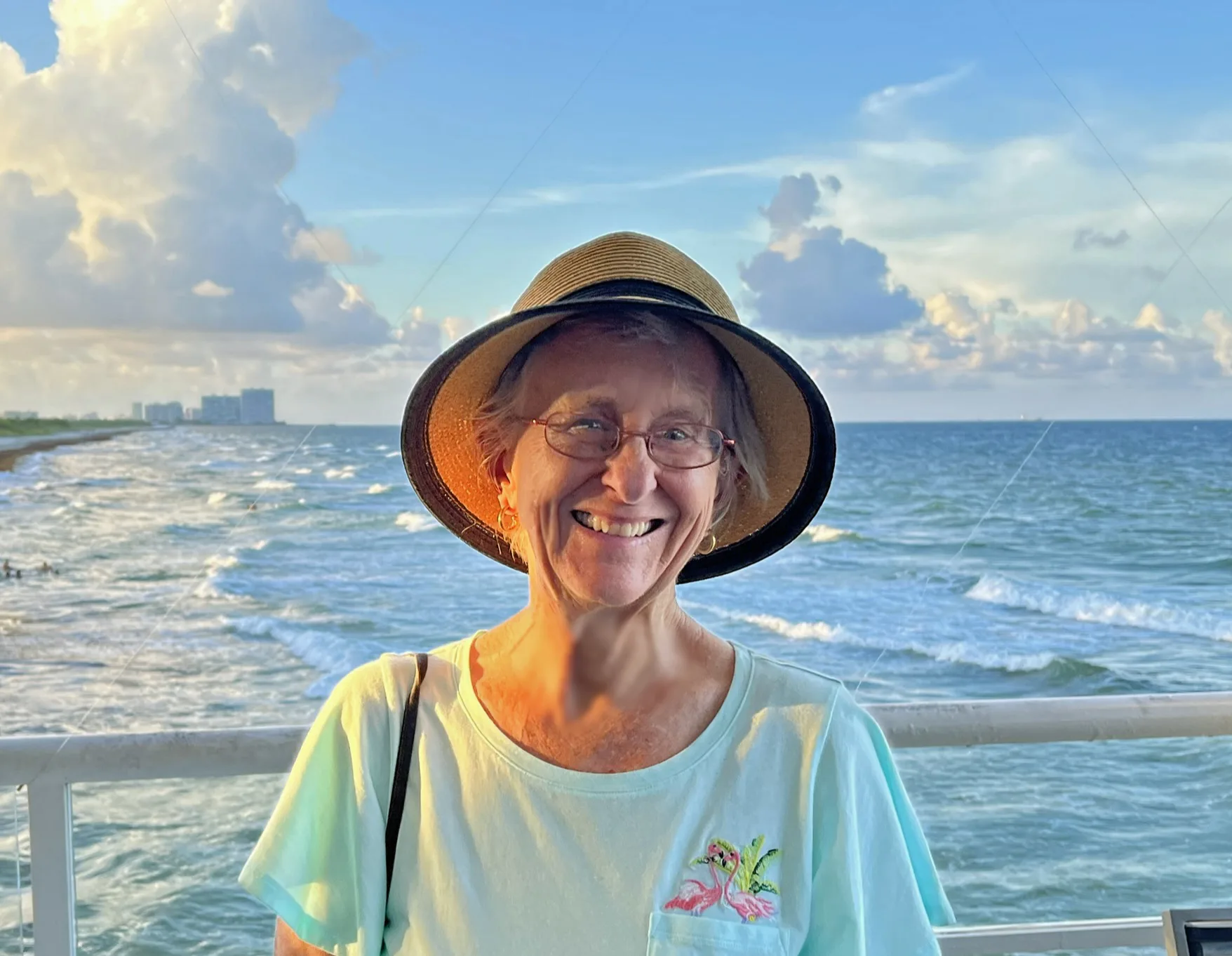
The author, Bonnie Gross, travels with her husband David Blasco, discovering off-the-beaten path places to hike, kayak, bike, swim and explore. Florida Rambler was founded in 2010 by Bonnie and fellow journalist Bob Rountree, two long-time Florida residents who have spent decades exploring the Florida outdoors. Their articles have been published in the Sun Sentinel, the Miami Herald, the Orlando Sentinel, The Guardian and Visit Florida.
